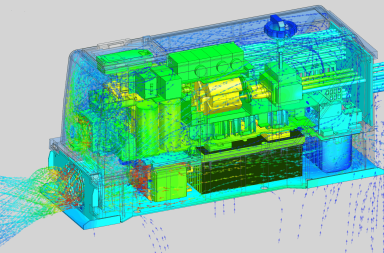The Variable Refrigerant Flow or the VRF air conditioning system is one of the most efficient temperatures regulating setups in commercial buildings. They are best for maintaining a stable temperature in every room or zone of a large building without any significant energy loss. Speaking of energy, VRFs are very energy efficient and effective in temperature control.
A building may have several rooms and floors, and each area might have different temperatures. So, the VRF is made with intelligent technology that controls the temperatures of other rooms and zones according to the requirement. For example, different floors and rooms will get different amounts of sunlight. The rooms that face the sun will experience heating, and other rooms will have normal temperatures. When this happens, the VRF system will analyse this situation and control the temperature accordingly, making sure that every room has a uniform temperature.
Nowadays, many firms have installed this system in their offices, and many are planning to do the same. This is because of the high efficiency and several benefits of VRF over traditional air conditioning.
The benefits of VRF are listed below:
1. Steady Comfort
The VRF has a compressor unit that can identify the temperature change in each room/zone, and this helps provide the precise temperature control needed for each air handling unit. Hence, the rooms/zones facing the sun will get more cooling, and the system will maintain the normal temperature in other rooms/zones.
2. Noiseless Operation
The VRF system has a condensing unit outside the building, which makes the most noise. And VRF’s air handlers are smaller and quieter than every other air conditioning system.
3. Energy Efficient
Energy efficiency is the most appealing feature of VRF systems, as the system always works differently than others. For example, it only pulls the exact amount of energy (for cooling/heating) required for a room, which varies according to temperature changes. This feature helps reduce unwanted cooling or heating in several places. Meanwhile, the standard air condition systems use considerable energy to cool every room. So, compared to the traditional system, VRFs are far better at saving electricity.
4. Flexible in Installation
The VRFs can be installed in small spaces without any difficulty or congestion issues. The air handlers of the VRF system are very thin compared to the traditional ones, and they require no duct tapes or attachments to stick to the walls. Moreover, the air handlers need minimum work to attach and function while taking up minimum space.
5. Cooling & Heating Simultaneously
The system can work as a heater and a cooler at the same time. The building may have different rooms facing directly to the sun or away from it, and the temperature will vary according to that. So, the smart tech of VRF will detect the temperature change and cool or heat the room or zone accordingly.
6. Smart Control
After the smartphone, every device is getting smarter. The TV, fridge, lights, and even vehicles are able to connect to smartphones. Just like that, the VRF systems have the feature to connect your phone, and it allows you to control the settings of the system. Moreover, this feature lets you change the temperature from anywhere, at any time, and this is commonly known as smart control.
7. Low Chances of Breakdown
As the system is designed to run when there is a need, the system works at the optimum level all the time. Therefore, there is no wastage of energy, and it works efficiently every time. Also, a low amount of water is produced, which further reduces the chances of failure.
So, in short, these features make VRF systems apt for offices spaces and commercial buildings.


